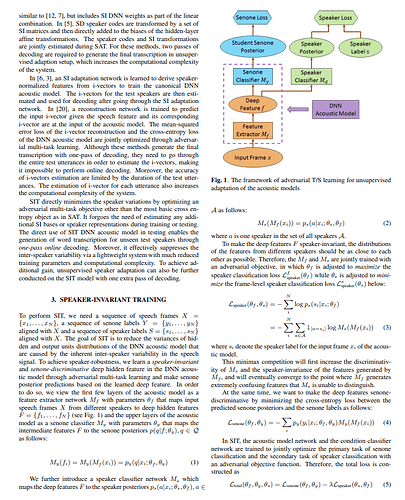I have a multi-task learning model with two multi classification tasks. One part of the model creates a shared feature representation that is fed into two subnets in parallel. The loss function for each subnet at the moment is cross entropy.
I want to minimize CE in one task and to maximise the cross entropy in one task so the model doesn’t/can’t learn anything about that one task, and then I think the resulting accuracy for that task should be 1/numoflabels i.e no better than random guess
In my network. I have two classifiers as:
class Adversarial(nn.Module):
def __init__(self):
super(Adversarial, self).__init__()
self.cnn = CNN()
self.emotion_classfier = EmotionClassfier()
self.speaker_invariant = SpeakerInvariant()
def forward(self, input):
input = self.cnn(input)
input_emotion = self.emotion_classfier(input)
input_speaker = self.speaker_invariant(input)
"""First confusion is here, how shall handle it here and then how to implemenet this loss function """
return input_stutter, input_speaker
class EmotionClassfier(nn.Module):
def __init__(self):
super(EmotionClassfier, self).__init__()
self.fc1 = nn.Linear(128, 64)
self.fc2 = nn.Linear(64, 5) #5 here is number of emotion classes
self.relu = nn.ReLU()
def forward(self, input):
input = input.view(input.size(0), -1)
input = self.fc1(input)
input = self.relu(input)
input = self.fc2(input)
return input
class SpeakerInvariant(nn.Module):
def __init__(self):
super(SpeakerInvariant, self).__init__()
self.fc1 = nn.Linear(128, 64)
self.fc2 = nn.Linear(64, 11) #11 here is number of speakers/labels
self.relu = nn.ReLU()
def forward(self, input):
input = input.view(input.size(0), -1)
input = self.fc1(input)
input = self.relu(input)
input = self.fc2(input)
return input
and the loss function I want to implement is as follows:
criterion = nn.CrossEntropyLoss() #For EmotionClassfier as well as SpeakerClassfier
loss_motion = criterion(output, emotion_label) #Want to Minimise this loss
loss_speaker = criterion(output, speaker_label)
"""Here I want to maximize the speakerloss,(Suppose there are five speaker labels and I want to learn the speaker independent features)
i.e I want to apply Gradient Reversal for SpeakerInvariant Network"""
loss = loss+emotion + lambda * loss_speaker
Could you please help it out here
From paper:
